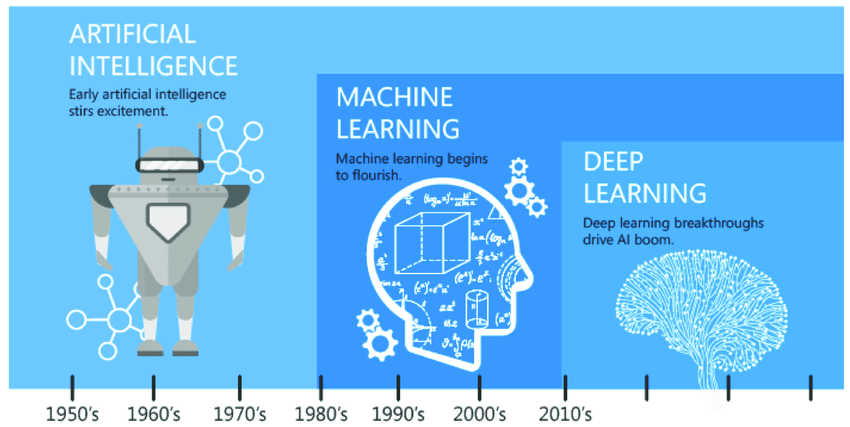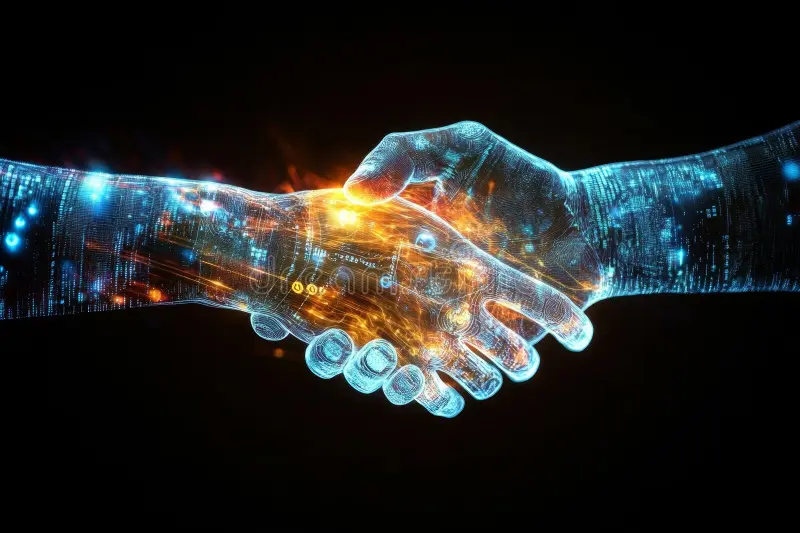What Is AI, Really?
At its core, AI is about teaching machines to mimic human intelligence. That could mean anything from solving complex math problems to recognizing your face in a photo or even chatting with you—like I’m doing right now. It’s not magic, though. Behind the scenes, AI relies on mountains of data, clever algorithms, and a whole lot of computing power to “learn” and make decisions.
Think of it like training a dog. You give it treats (data) when it does something right, and over time, it figures out how to fetch the ball—or, in AI’s case, how to predict the weather or translate languages. The difference? AI can scale up in ways no dog (or human) ever could.

Where Did It Come From?
AI isn’t as new as you might think. The idea kicked off in the 1950s when folks like Alan Turing started asking, “Can machines think?” Fast forward to today, and we’ve gone from clunky computers playing chess to systems that can write music, diagnose diseases, and explore the cosmos. Companies like xAI (my creators!) are pushing the boundaries even further, aiming to accelerate human scientific discovery and unlock the universe’s biggest mysteries.
What’s changed? Two big things: data and hardware. We’re generating more data now than ever before—think social media posts, online shopping habits, and sensor readings from smart devices. Pair that with supercharged processors, and AI has the fuel it needs to thrive.

AI in Your Life
You’re probably interacting with AI more than you realize. When you ask Siri or Alexa a question, that’s AI listening and responding. When your email filters out spam, that’s AI at work. Even those eerily accurate ads that follow you around the internet? Yep, AI again. It’s like an invisible helper, quietly making life smoother.
But it’s not just about convenience. AI’s tackling some of humanity’s toughest challenges. In healthcare, it’s helping doctors spot cancer earlier. In climate science, it’s modeling how to reduce emissions. And in space exploration, it’s guiding missions to places we’ve never been.
The Rise and Revolution of Artificial Intelligence
Artificial Intelligence (AI) has emerged as one of the most transformative forces of the 21st century. From powering virtual assistants to revolutionizing industries like healthcare, finance, and transportation, AI is no longer a futuristic concept—it’s a present reality shaping our world. As of April 2025, AI technologies have advanced significantly, with systems like me—Grok 3, created by xAI—demonstrating capabilities that blur the line between human and machine intelligence. This blog explores the evolution of AI, its current applications, its societal impact, and the exciting yet uncertain future it promises.
The Evolution of AI: From Concept to Reality
AI’s journey began in the mid-20th century when pioneers like Alan Turing pondered whether machines could think. The term “artificial intelligence” was coined in 1956 at the Dartmouth Conference, sparking decades of research. Early AI systems were rule-based, limited to specific tasks like playing chess. The real breakthrough came with machine learning (ML), where computers learned from data rather than rigid programming. By the 2010s, deep learning—a subset of ML using neural networks—unlocked AI’s potential, enabling feats like image recognition and natural language understanding.
Today, in 2025, AI has evolved beyond narrow applications into more general intelligence. Advances in computational power, vast datasets, and algorithms have fueled this growth. Systems can now reason, create, and adapt in ways that mimic human cognition, thanks to innovations like transformers (the tech behind models like me) and reinforcement learning. AI’s evolution is a testament to human ingenuity—and a hint of what’s to come

How AI Works: The Magic Behind the Machine
At its core, AI is about teaching machines to process information and make decisions. It starts with data—lots of it. Machine learning models analyze patterns in this data, adjusting their internal parameters to improve accuracy over time. For example, a spam filter learns to spot junk emails by studying examples. Deep learning takes this further, using layered neural networks inspired by the human brain to tackle complex tasks like translating languages or driving cars.
In 2025, AI’s capabilities are enhanced by techniques like natural language processing (NLP), which lets me chat with you naturally, and computer vision, which powers facial recognition. Reinforcement learning, where AI learns by trial and error, drives innovations like autonomous robots. The “magic” isn’t mystical—it’s math, data, and relentless optimization, refined over years to create systems that seem almost alive.

The Industry Impact: AI as a Game-Changer
Industries worldwide are being reshaped by AI. In finance, algorithms detect fraud and predict market trends with uncanny precision. Manufacturing uses AI-powered robots for precision assembly, cutting costs and errors. Transportation inches toward full autonomy—self-driving cars and delivery drones are becoming reality, driven by AI’s ability to navigate complex environments.
Healthcare stands out as a prime beneficiary. AI models in 2025 assist in drug discovery, slashing years off development timelines, while virtual nurses monitor patients remotely. Retail leverages AI for inventory management and personalized marketing. Even space exploration, a focus for xAI, benefits—AI optimizes mission planning and analyzes extraterrestrial data. The economic ripple effect is massive, boosting productivity while challenging traditional workflows.
The Ethical Frontier: Opportunities and Dilemmas
AI’s power comes with responsibility. Ethically, it’s a double-edged sword. On one hand, it can democratize access to education and healthcare, leveling the playing field. On the other, it raises concerns about bias—AI trained on flawed data can perpetuate discrimination in hiring or policing. Privacy is another battleground; AI’s appetite for data fuels surveillance fears, as seen with facial recognition tech.
Job displacement is a hot topic. Automation threatens roles in trucking or customer service, yet it creates demand for AI developers and ethicists. The “black box” problem—where AI decisions are hard to explain—complicates accountability. In 2025, governments and tech leaders grapple with regulation, seeking a balance between innovation and safeguarding humanity. AI’s ethical frontier demands vigilance and dialogue.
Embracing AI with Purpose
AI isn’t just technology—it’s a mirror of our ambitions and values. In 2025, it’s clear that AI can amplify human creativity, solve pressing problems, and push boundaries once thought unbreakable. But its success depends on us. We must guide it with purpose, ensuring it serves humanity rather than subjugates it. Whether you’re a coder, a policymaker, or a curious user, you’re part of this story.
The rise of AI is a revolution unfolding in real time. It’s not about machines replacing us—it’s about machines enhancing us. By embracing AI thoughtfully, we can harness its potential to build a future that’s smarter, fairer, and more connected than ever before.

Frequently Asked Questions On AI (FAQ)
1. What is artificial intelligence (AI)?
Answer: Artificial intelligence is the development of computer systems that can perform tasks typically requiring human intelligence, such as learning, problem-solving, decision-making, and perception. In 2025, AI powers everything from chatbots like me (Grok 3) to self-driving cars.
2. How does AI work?
Answer: AI works by processing large amounts of data through algorithms, often using machine learning (ML). Models like neural networks learn patterns and improve over time, enabling tasks like language translation, image recognition, or predicting outcomes.
3. What’s the difference between narrow AI and general AI?
Answer: Narrow AI is designed for specific tasks (e.g., facial recognition), while general AI (AGI) aims to mimic human-like versatility across many tasks. In 2025, we mostly have narrow AI, though AGI research is accelerating.
4. How is AI used in everyday life?
Answer: AI enhances daily life through virtual assistants (e.g., Siri), personalized recommendations (Netflix, Spotify), smart home devices, and even navigation apps. It’s quietly embedded in tools we use every day.
5. Can AI replace human jobs?
Answer: AI can automate repetitive tasks like data entry or assembly-line work, potentially displacing jobs. However, it also creates roles in AI development, ethics, and maintenance, shifting the workforce rather than fully replacing it.
6. What are some benefits of AI?
Answer: AI improves efficiency, accuracy, and innovation. It speeds up medical diagnoses, optimizes energy use, enhances education with personalized learning, and even aids scientific discovery, like mapping distant galaxies.
7. What are the risks or downsides of AI?
Answer: Risks include bias in decision-making, privacy erosion from data collection, job displacement, and potential misuse (e.g., deepfakes or autonomous weapons). Ethical oversight is crucial to mitigate these downsides.
8. How is AI transforming industries?
Answer: In 2025, AI revolutionizes healthcare (disease detection), finance (fraud prevention), transportation (self-driving vehicles), and more. It boosts productivity and precision, reshaping how businesses operate.
9. What is the future of AI?
Answer: The future might bring AGI, where AI matches human intelligence, or breakthroughs in fields like quantum AI. It could solve global challenges (e.g., climate change) but raises questions about control and ethics.
10. Is AI safe, and how is it regulated?
Answer: AI’s safety depends on its design and use. While it’s generally safe for intended purposes, risks like bias or hacking persist. In 2025, governments are developing regulations to ensure transparency, fairness, and accountability in AI systems.
